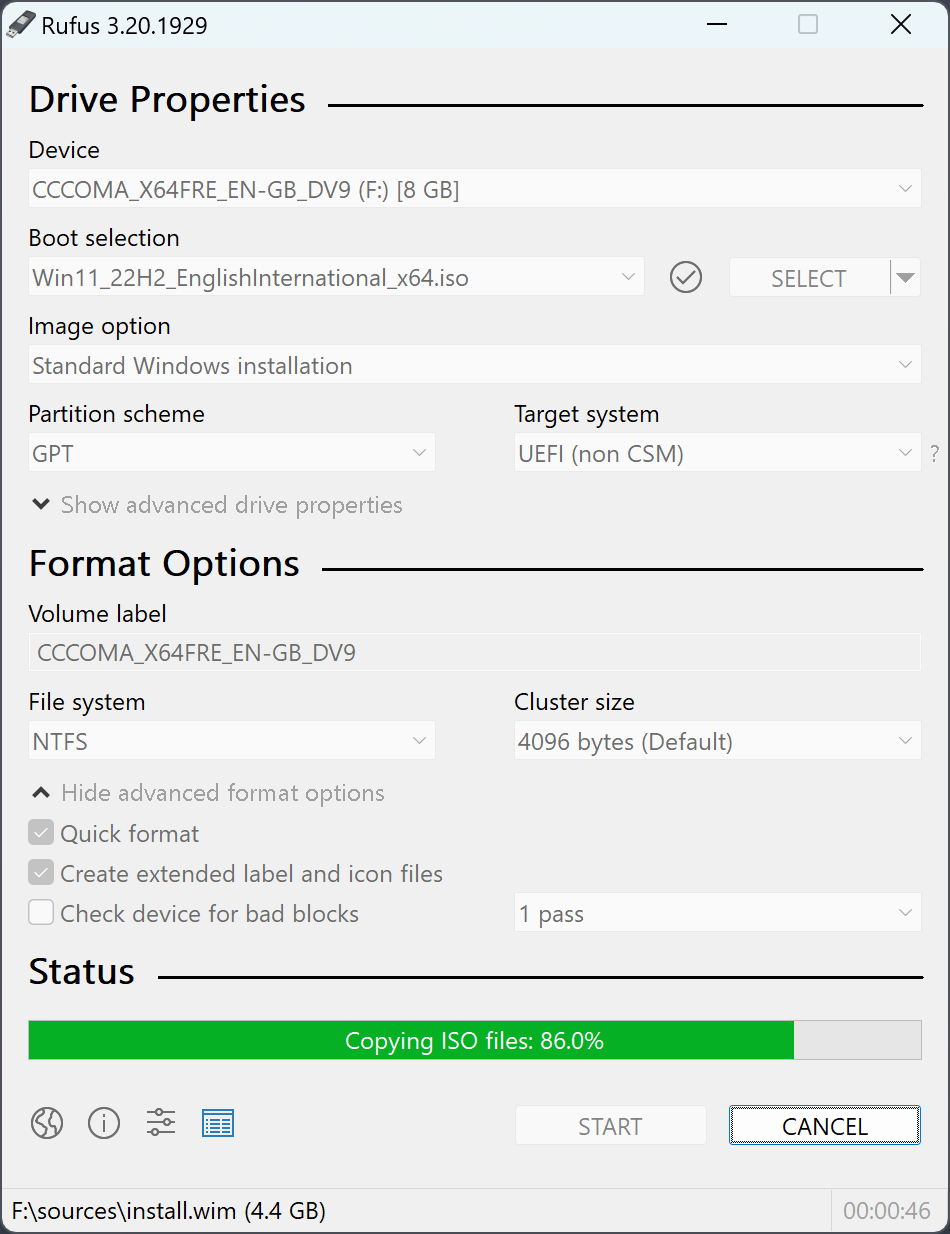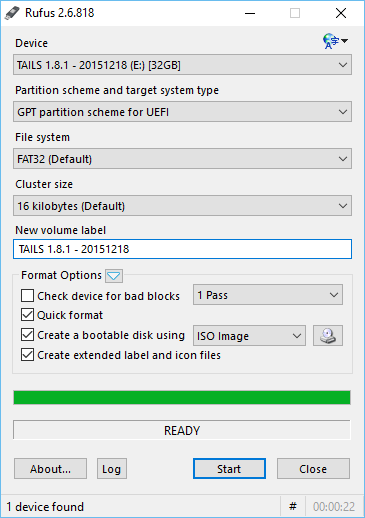
Fix a crash when trying to open Windows ISOs, with the MinGW compiled x86 32-bit version.
#Rufus linux full
Add saving and restoring current drive to/from compressed FFU ( Full Flash Update) image.Add saving and restoring current drive to/from compressed VHDX image.Add detection and warning for UEFI revoked bootloaders (including ones revoked through SkuSiPolicy.p7b).Rufus is produced in a 100% transparent manner, from its public source, using a MinGW32 environment. You are free to distribute, modify or even sell the software, insofar as you respect the GPLv3 license.
#Rufus linux license
GNU General Public License (GPL) version 3 or later. To provide feedback, report a bug or request an enhancement, please use the GitHub issue tracker.
#Rufus linux iso
Notes on ISO Support:Īll versions of Rufus since v1.1.0 allow the creation of a bootable USB from an ISO image (.iso).Ĭreating an ISO image from a physical disc or from a set of files is very easy to do however, through the use of a CD burning application, such as the freely available InfraRecorder or CDBurnerXP. If you create a DOS bootable drive and use a non-US keyboard, Rufus will attempt to select a keyboard layout according to the locale of your system.

The only things you need to carry out any of these operations, of course, are the images of the operating systems themselves, which you can download from their respective websites. You can even create Windows installations from the ISO image.


#Rufus linux install
Thanks to this, it's possible to install Linux distributions or images to use on devices such as a Raspberry Pi. You can create partition types such as Syslinux, ReactOS, Grub, UEFI: NTFS, or the aforementioned FreeDOS. Its versatility lets you format a new drive, as well as install Linux, Windows, and even FreeDOS disk images, which, in fact, comes built into the application itself. Rufus is a tool for Windows that lets you create boot devices from external storage units, like USB flash drives and SD cards.


 0 kommentar(er)
0 kommentar(er)
